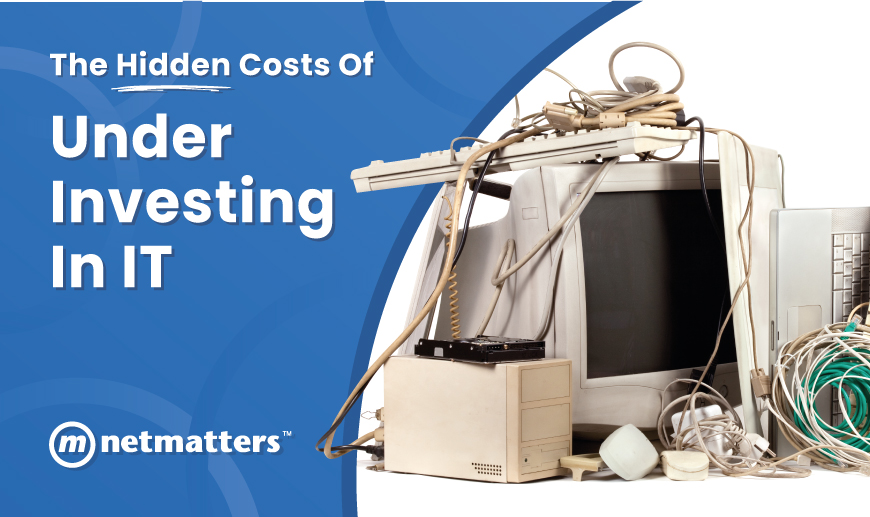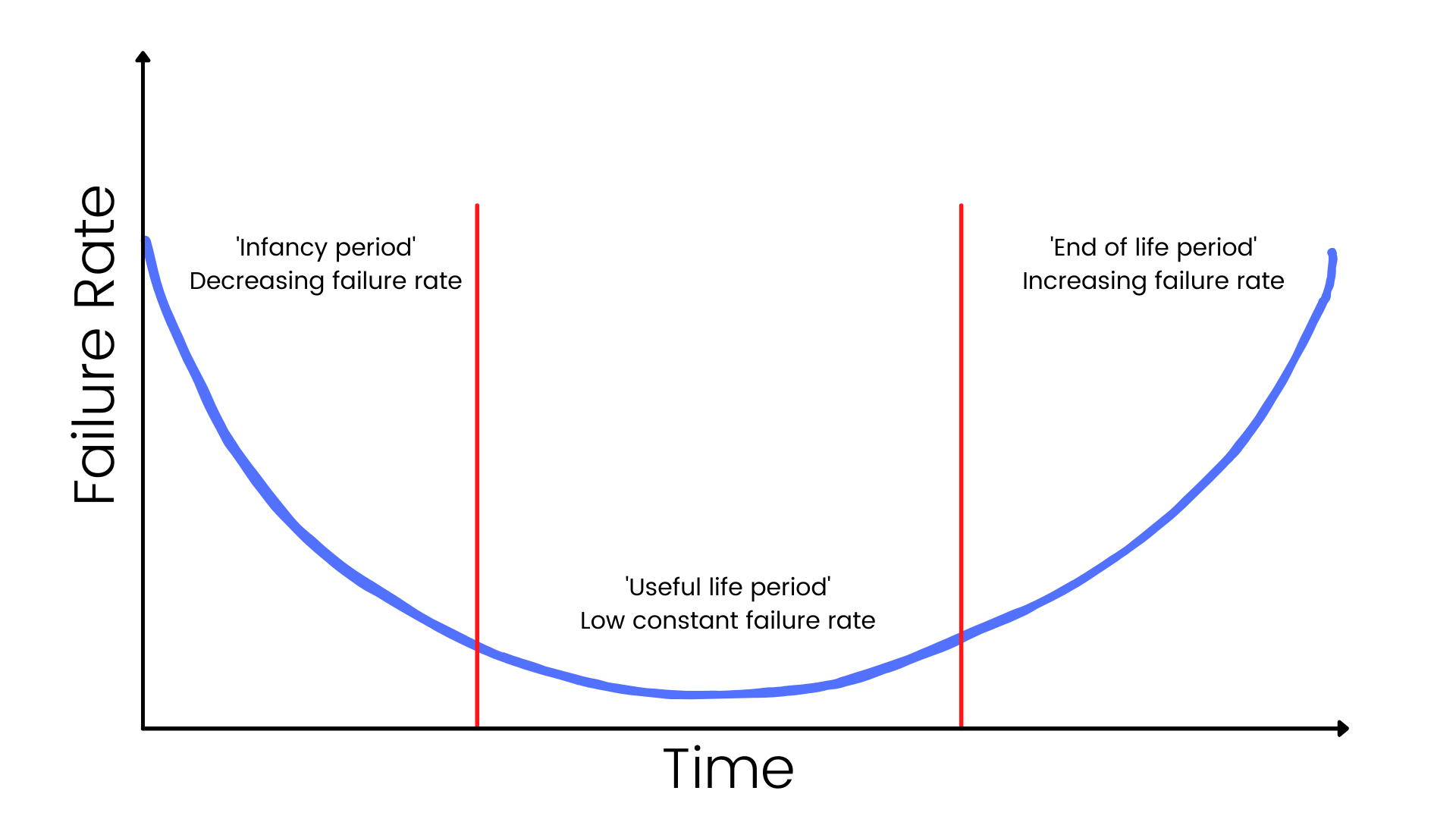- Bespoke Software
- IT Support
- Digital Marketing
-
Telecoms
Services
- Our Telecoms Services
- Business Mobile
- Hosted VoIP Provider
- Business VoIP Systems
- Business Broadband
- Leased Lines Provider
- 3CX Systems
-
Web
Design
- Our Web Design Services
- Bespoke Website Design
- eCommerce Website Design
- Pay Monthly Websites
- Branding & Design
- Mobile App Development
- Web Hosting
- Cyber Security
-
Developer
Course
- Our Developer Course Services
- Train For A Career In Tech
- Skills Bootcamp
- Scion Scheme Frequently Asked Questions
- Scion Collaborators
The Hidden Cost of Under Investing in IT

Posted by Netmatters

Some businesses try to minimise IT costs by delaying investment in hardware until it’s absolutely essential. This approach has some hidden costs that can’t easily be attributed to this strategy but are real nonetheless, and over time these costs can add up.
The hidden costs of underinvesting in IT hardware can be broken down into three main areas;
- Support
- Reliability
- Efficiency.
Support
Any business owner will know that a large proportion of IT spend goes on support. In a lot of instances, this is an unavoidable cost. A business needs its IT infrastructure regularly supported and maintained in order to continue to operate effectively.
Additional support costs are often incurred when the hardware has reached its effective ‘end of life’ but has not been replaced. Ideally, workstations and servers should be replaced when they reach 3.5 years and 5 years of age, respectively. These timeframes may seem short to some people hoping to get the most time from their hardware investment but they are driven by data that suggests this is the optimal schedule to be changing out hardware.
PC hardware has what is described as a bathtub failure rate. This means that most hardware is likely to either fail in the first few weeks or after the 3.5-year point with very few failures likely in the middle. This create a ‘bathtub’ shape when this failure data is plotted on a graph.

Reliability
Allowing hardware to stray into this ‘end of life’ zone exposes your business to reliability issues that will inevitably increase support costs and incur additional costs for support when the hardware does fail whilst still in service. This ‘end of life’ zone is almost always reached earlier than a business would expect, because of the speed that technology is moving.
Computing power and storage capabilities are increasing at a fast rate with the maximum computing power doubling approximately every 18 months (known as Moore’s law). This continuing increase in power allows developers to build powerful new software with higher performance requirements which can deliver increased functionality for many different types of new products and services.
3 years is a long time in the tech world and trying to run new and up-to-date software on machines that are older than this will likely be pushing the limits of the devices’ performance, increasing the likelihood of failure. With this increased risk of failure, the necessity for more support, and the cost that comes with it, also drastically increases.
Out-of-date and failing hardware also greatly increases the chance of security breaches. Attackers look for any potential weakness in a network can find the obsolete or neglected hardware, which is unable to be fully updated or run the latest security software, as an easy point of access. Regularly scheduled updates and replacement of items such as servers can help to prevent a potentially very serious security breach.
“Businesses that adopt a rolling replacement of hardware that keeps the devices below their effective life are likely to have a greatly reduced support cost” says Robert George, IT Service Director at Netmatters. “We have many customers who we have worked with to simplify and maintain their infrastructure in an optimal state that now benefit from greatly reduced IT support costs and fewer disruptions due to failures”.
Efficiency
The other hidden cost in this situation relates to the efficiency of the operators themselves. Working on slow unreliable hardware reduces a person’s effectiveness and can also, understandably, increase their frustration. Time is lost waiting for programs or pages to load and also having to restart or reload things when they get stuck.
Research suggests that if all of these costs are taken into account then replacing all hardware on a time based cycle is the most cost effective way to manage your infrastructure.
One solution to help you manage the costs of hardware and budget for rolling replacement is to calculate the value of each piece of hardware and divide it by the effective life in months. This will then give you a monthly budget to aim for when spending on hardware renewal and allows your business the ability to create a realistic replacement budget that can also be considered as revenue funded.
Over the last few years, there has also been a shift to cloud-based infrastructures which helps maintain a simple budget with a monthly cost and no hardware replacement required at all. A cloud-based approach also allows for more regular and robust backups, which can be initiated from anywhere on the network, as well as the possibility of quickly scaling your business up (or down) without the need for a big change of hardware.
If your business has essential hardware that is close to reaching the end of its effective life or you’re simply looking to keep on top of your monthly IT support budget, you can rely on the Netmatters team for maintaining your business' reliability, efficiency and budget.
97% of IT support requests are processed within the hour, with our team working through approximately 3,500 IT-related tasks per month.
If you’re interested in investing smartly in your IT support, call our expert team on 01603 515007 or get in touch by submitting the form below.



